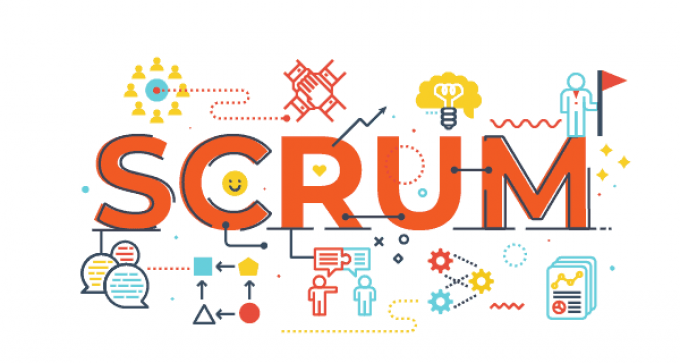Introduction:
In the world of agile project management, Scrum has emerged as one of the most popular and widely adopted frameworks. Originally developed for software development, Scrum’s versatility has led to its application in various industries and projects. In this comprehensive blog, we will delve into the fundamentals of Scrum, its principles, roles, ceremonies, and benefits, providing you with everything you need to know about this powerful agile methodology.
- Understanding Scrum:
Scrum is an agile project management framework designed to enhance product development through iterative and incremental approaches. It promotes flexibility, adaptability, and collaboration, enabling teams to respond rapidly to changing requirements and deliver valuable increments at regular intervals.
- Core Principles of Scrum:
At the heart of Scrum lie its five core values: commitment, courage, focus, openness, and respect. These principles guide the team’s behavior and interactions, fostering a positive and collaborative work environment.
- Scrum Roles:
Scrum defines three primary roles:
- Scrum Master: The facilitator and servant leader who ensures the Scrum framework is followed, removes impediments, and enables the team to perform at its best.
- Product Owner: The individual responsible for defining and prioritizing the product backlog, ensuring that the team delivers value to customers and stakeholders.
- Development Team: The cross-functional team responsible for converting product backlog items into potentially shippable increments.
- Scrum Ceremonies:
Scrum incorporates several ceremonies to structure the work and interactions within the team:
- Sprint Planning: A collaborative meeting where the team determines the work to be done during the upcoming sprint.
- Daily Stand-Up: A brief daily meeting for team members to synchronize their work, discuss progress, and identify any obstacles.
- Sprint Review: A meeting to demonstrate the increment developed during the sprint and gather feedback from stakeholders.
- Sprint Retrospective: A reflective session where the team discusses what went well, what could be improved, and implements changes to enhance performance.
- Scrum Artifacts:
Scrum employs three main artifacts to ensure transparency and provide insights into the project’s progress:
- Product Backlog: An ordered list of all desired work items, managed and prioritized by the Product Owner.
- Sprint Backlog: A subset of items from the product backlog selected for the current sprint, managed and owned by the Development Team.
- Increment: The sum of all product backlog items completed during a sprint, potentially shippable and ready for review.
Benefits of Scrum:
Implementing Scrum offers numerous benefits to both the development team and the organization as a whole:
- Improved Flexibility: Scrum allows for frequent adaptations to changing requirements, fostering a more flexible and responsive development process.
- Faster Time-to-Market: Incremental development and regular releases enable faster delivery of valuable features to customers.
- Enhanced Customer Satisfaction: Scrum’s focus on customer collaboration and feedback ensures that products align with customer needs and expectations.
- Increased Transparency: Scrum ceremonies and artifacts provide clear visibility into the project’s progress and potential issues.
- Better Team Morale: The collaborative and empowering nature of Scrum boosts team morale, leading to higher job satisfaction and productivity.
Scrum Framework Flexibility:
Scrum’s inherent flexibility allows it to adapt to various project types and industries. It is not limited to software development and can be applied to marketing, sales, HR, and other fields where iterative and incremental approaches are beneficial.
Empowering Development Team Autonomy:
Scrum empowers the Development Team to make decisions about how to accomplish their work. This autonomy increases ownership, creativity, and accountability within the team.
Time-Boxed Sprints:
Sprints in Scrum are time-boxed iterations, typically lasting two to four weeks. This fixed timeframe instills discipline and encourages the team to deliver valuable increments consistently.
Focus on Continuous Delivery:
The primary goal of each sprint is to produce a potentially shippable increment. This approach encourages continuous delivery, allowing organizations to release valuable features to customers more frequently.
Early and Continuous Feedback:
Scrum promotes frequent reviews and regular engagement with stakeholders to gather feedback on the product increment. Early and continuous feedback drives iterative improvement and ensures that the product aligns with customer needs.
Scalability with Large Projects:
Scrum is not only suitable for small teams but can also scale to accommodate larger projects. Scaled Agile Framework (SAFe) and Large-Scale Scrum (LeSS) are popular frameworks that extend Scrum to multiple teams and complex projects.
Velocity and Forecasting:
Scrum teams measure their velocity, which represents the amount of work they can complete in a sprint. Velocity helps teams forecast the amount of work they can take on in future sprints and plan releases more effectively.
Scrum in Distributed Teams:
Scrum can be adapted to accommodate distributed or remote teams. Virtual tools and online collaboration platforms enable seamless communication and effective coordination across geographical locations.
Continuous Learning and Improvement:
Scrum encourages a culture of continuous learning and improvement. Regular retrospectives and a focus on inspecting and adapting processes lead to an environment where teams continuously enhance their performance.
Empirical Process Control:
Scrum is based on empirical process control, meaning that decisions are made based on observations, experience, and real data. This approach enables teams to adapt quickly to changes and improve over time.
Collaboration beyond the Development Team:
Scrum promotes collaboration across various stakeholders, including product owners, customers, managers, and other departments. This inclusive approach ensures that everyone is aligned towards common goals.
Incremental Risk Mitigation:
Scrum’s incremental and iterative nature allows for early risk identification and mitigation. Potential issues are addressed early in the development process, reducing the likelihood of major problems later on.
Conclusion:
Scrum is a powerful agile project management framework that fosters collaboration, adaptability, and continuous improvement. By understanding its core principles, roles, ceremonies, and benefits, teams and organizations can embrace Scrum’s methodology to streamline product development, drive customer value, and thrive in today’s dynamic and competitive business environment. As you embark on your agile journey, adopting Scrum can be a transformative step towards achieving project success and delivering exceptional products to your customers.

